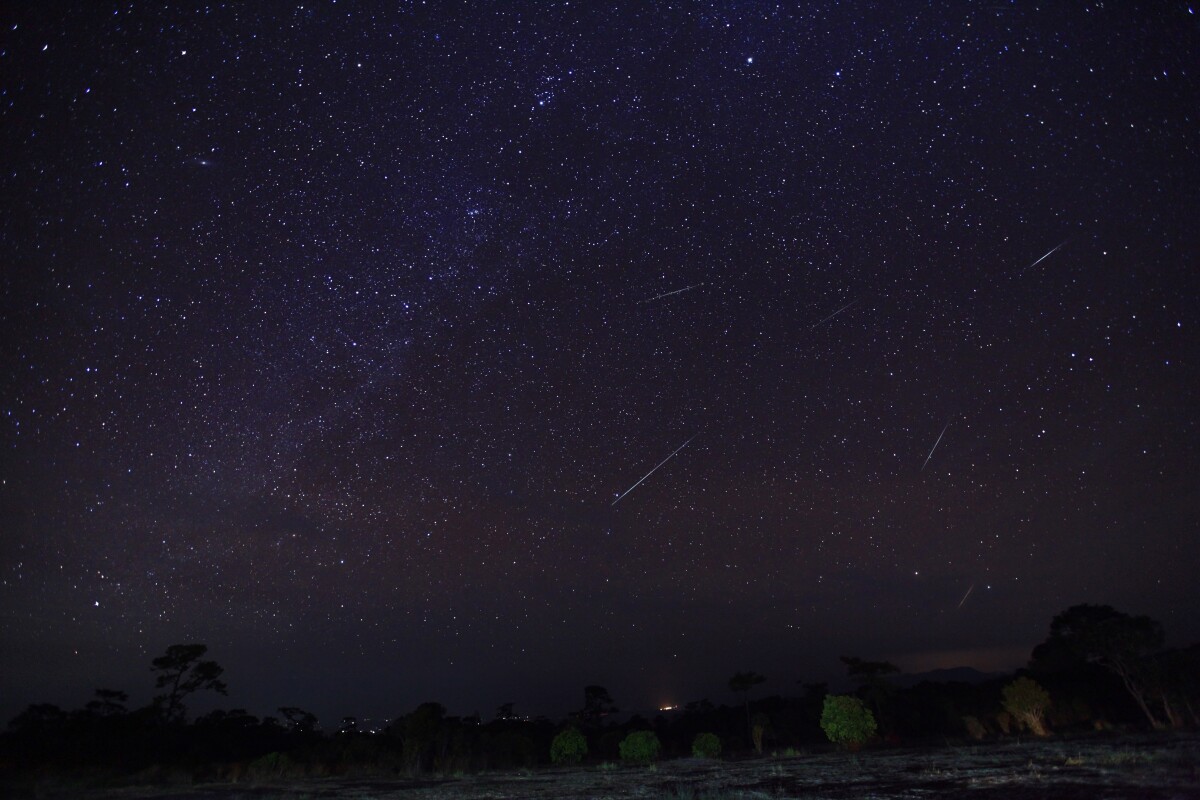If you've never made a wish on a falling star, now's your chance to make up for lost time. The Geminid meteor shower, which is best viewed without a telescope and in clear, dark skies, should peak from 13 to 15 December with scores of meteors expected to shoot across the sky each hour.
The Geminid shower has quite a reputation for generating large numbers of "shooting stars" (meteors) that appear to emanate from a radiant point in the constellation of Gemini. The characteristic streaks and flashes of light created by meteors are the result of tiny particles of dust and debris, ranging from a millimeter to a centimeter across, that burn up as they enter the Earth's atmosphere at high speeds.
The Geminids are not like other meteor showers, though. Usually the dust particles we see as meteor showers emanate from comets. As a comet approaches the sun, it forms a distinctive tail as its "dirty ice" melts and some of the ice, dust, rocky materials and organic compounds that make up the comet appear in our skies as a meteor shower. Comets are generally believed to have formed deep in space and travel extremely long orbits around the sun.
But the Geminid meteors originate from an asteroid named 3200 Phaethon, which is a little over 3 miles (5 km) in diameter, and orbits the Sun in a close elliptical orbit once every 1.43 years. This close-orbiting object is made up of metal and rocky matter that was probably formed at around the same time as our solar system's planets.
So it looks like an asteroid and acts like an asteroid … but the mystery of 3200 Phaethon is that asteroids don't usually throw dust into space. Scientists suspect that perhaps hundreds or thousands of years ago, it may have been a comet.
The Geminid shower has only been recognized in our skies since 1862. In more recent years it has become brighter and more intense because Jupiter and Saturn's gravitational forces are drawing a denser part of the Geminid stream closer to Earth.
Compared with other showers, Geminid meteors travel slowly, at around 22 miles per second, and burn up in the atmosphere with a distinctive bright yellowish hue, which makes them easy to spot with the naked eye.
Where to look for the meteor shower
To observe the Geminid meteors, check that the sky will be clear and find a place as far as possible from light-polluted areas. Give yourself about 20 minutes for your eyes to adjust to the dark and look in the general direction of the two brightest stars of the Gemini constellation, named after the twins of ancient Greek and Roman mythology, Castor and Pollux.
Although the meteors often appear from their "radiant" point in the constellation, you may see meteors at any point in the sky. As the constellation moves higher overhead, the number of meteors you'll see should be much higher.
"A good meteor shower is a spectacular sight," says Prof Martin Barstow, President of the UK's Royal Astronomical Society. "If you have clear skies, there are few better and easier ways to get an impression of the dynamism of the universe we live in, and how the Earth is directly connected to events in the rest of the Solar System."
Source: Armagh Observatory




